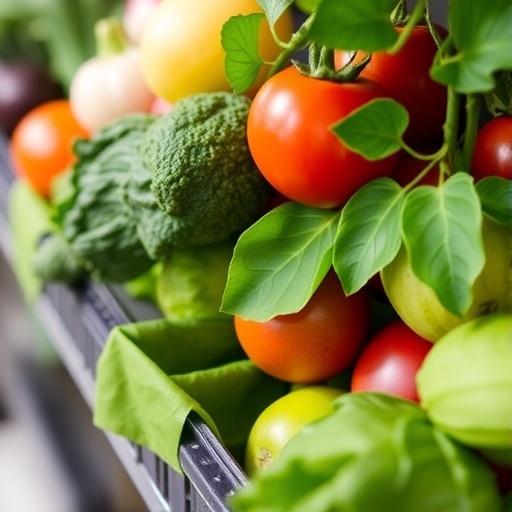In a groundbreaking study recently published in the International Journal of Hygiene and Environmental Health, scientists from the Environmental Working Group (EWG) have unveiled compelling evidence linking the consumption of certain fruits and vegetables with elevated levels of harmful pesticides detected in human bodies. This peer-reviewed research sheds new light on dietary pesticide exposure and its potential long-term health implications, reinforcing the critical need to re-examine current food safety regulations and promote more informed consumer choices.
Pesticides, chemical agents widely used in agriculture to control pests and increase crop yields, have long been scrutinized due to their association with serious health concerns. These concerns range from carcinogenic effects and reproductive toxicity to hormone disruption and neurodevelopmental harm in children. Despite their pervasive presence in the food supply, quantifying real-world exposure through dietary intake has remained a formidable challenge, as previous studies mostly focused on occupational or residential exposure pathways.
Leveraging comprehensive federal datasets from the U.S. Department of Agriculture’s pesticide residue analyses and biomonitoring data from the Centers for Disease Control and Prevention’s National Health and Nutrition Examination Survey (NHANES), the EWG scientists devised an innovative metric: a cumulative dietary pesticide exposure score. This score estimates an individual’s pesticide exposure based on their reported consumption of produce items and the corresponding levels of pesticide residues commonly found in those foods. By integrating factors such as the frequency, concentration, and toxicity of multiple pesticides, this approach represents a significant advancement in environmental health research.
The study examined data collected between 2013 and 2018, combining dietary questionnaires and urine biomarker analyses from 1,837 NHANES participants. Researchers focused on three major classes of pesticides—organophosphates, pyrethroids, and neonicotinoids—detectable through urinary biomarkers. Statistical comparisons revealed a robust correlation between higher dietary pesticide exposure scores and increased urinary pesticide metabolites, showing that what people eat directly influences the pesticide burden in their bodies.
Importantly, the research highlights that not all produce contributes equally to pesticide exposure. Fruits and vegetables such as strawberries, spinach, and bell peppers, which are known to harbor high pesticide residues, were associated with significantly elevated pesticide biomarkers in participants’ urine samples. Conversely, consumption of produce items with typically lower pesticide residues resulted in minimal biomarker detection, underscoring the critical role of produce selection in dietary pesticide exposure.
Moreover, the study elucidated that individuals are simultaneously exposed to mixtures of pesticides rather than isolated chemicals. The researchers detected measurable residues of 178 distinct pesticides on fruits and vegetables, although only 42 of these corresponded to biomarkers in urine. This discrepancy suggests gaps in biomonitoring coverage and poses difficulties for regulatory agencies that traditionally assess pesticides on a chemical-by-chemical basis rather than accounting for cumulative and synergistic effects.
Another unexpected finding was the influence of potatoes on exposure data. Including potato consumption in the analysis obscured the relationship between produce intake and pesticide levels in urine, likely due to the diverse methods through which potatoes are prepared and consumed. This variability complicates accurate estimation of pesticide exposure from this staple crop and indicates that further targeted research is necessary to unravel potatoes’ role in dietary pesticide exposure.
The implications of these findings extend beyond individual health concerns. They raise fundamental questions about the adequacy of current pesticide regulations governed by the Environmental Protection Agency (EPA). Existing regulatory frameworks primarily evaluate pesticide residues one compound at a time, neglecting the reality that consumers are routinely exposed to complex mixtures of pesticides through their diets. As such, regulatory limits may not sufficiently safeguard vulnerable populations such as children and pregnant individuals from the cumulative risks presented by combined pesticide exposures.
Dr. Alexis Temkin, lead author and vice president for science at EWG, emphasizes the urgency of these insights. She notes that while eating fruits and vegetables remains essential for health, awareness of pesticide exposure pathways is equally critical. Reconsidering pesticide safety guidelines informed by real-world exposure data could enhance public health protections and mitigate the risks posed by commonly used agricultural chemicals.
The methodology introduced by the EWG researchers—linking dietary data with biomonitoring markers via a cumulative exposure score—offers a powerful tool for future investigations on the health impacts of pesticide mixtures. It opens avenues for more nuanced risk assessments and policy reforms that reflect the complexities of human exposure.
From a consumer perspective, the study underscores the benefits of choosing organic produce, which is cultivated without the use of many synthetic pesticides. Previous research has demonstrated that switching from conventional to organic fruits and vegetables can rapidly reduce pesticide biomarkers in the body, sometimes within days. EWG’s Shopper’s Guide to Pesticides in Produce™ serves as a practical resource, identifying the “Dirty Dozen™” — produce items with the highest pesticide residues — and the “Clean Fifteen™” — those with the lowest. This guide empowers consumers to prioritize organic purchases strategically when possible.
In conclusion, this pivotal research not only advances scientific understanding of dietary pesticide exposure but also highlights pressing regulatory and public health challenges. As the link between what we eat and pesticide accumulation in the human body becomes clearer, it reinforces the necessity for robust surveillance, transparent reporting, and proactive measures to reduce chemical exposure from the foods we rely on daily. Strong federal data infrastructure and continued commitment to environmental health research remain indispensable for protecting future generations.
Subject of Research: People
Article Title: A cumulative dietary pesticide exposure score based on produce consumption is associated with urinary pesticide biomarkers in a U.S. biomonitoring cohort
News Publication Date: 24-Sep-2025
Web References:
https://doi.org/10.1016/j.ijheh.2025.114654
EWG Shopper’s Guide to Pesticides in Produce™
Dirty Dozen™
Clean Fifteen™
References: Environmental Working Group (EWG) study published in International Journal of Hygiene and Environmental Health, September 2025.
Keywords: Agricultural chemistry, Fungicides, Herbicides, Insecticides, Pesticides, Toxicity, Environmental toxicology, Human health, Environmental health, Public policy




